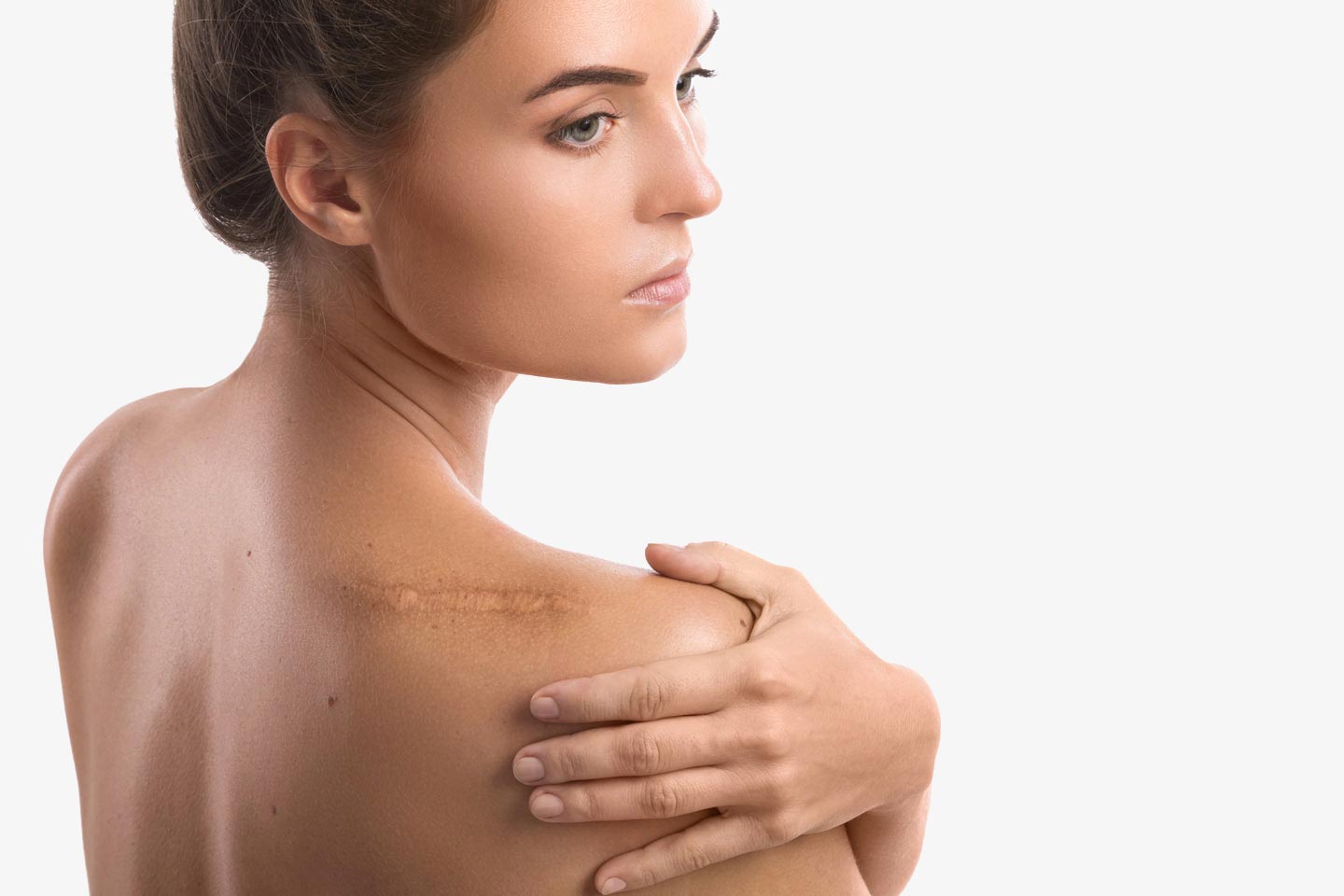Scar revision
Overview
Scar revision procedures minimize the appearance of visible scars, using state-of-the-art techniques and technologies designed to produce the best aesthetic result possible.
When wounds do not heal well, scars remain and can cause considerable embarrassment. When these marks are disfiguring to the point of impacting your self-esteem, scar revision can minimize their appearance, restoring the confidence in your appearance, while scar removal can provide an ultimate solution to this problem.
Our board-certified surgeons are experts in diverse techniques to facilitate scar removal, both surgically and not. They have dedicated their careers to helping patients overcome a variety of aesthetic concerns, achieving results that are both natural and beautiful. They possess the techniques and treatments necessary to help you look and feel your best, regardless of where your scar is located or what type of scar it is.
Are You a Candidate for a scar revision?
Good candidates for scar revision surgery are in good physical and emotional health.
Patients should refrain from smoking before the procedure is carried out, as this can delay healing and keep them from attaining the best results.
As always, candidates should have realistic expectations about the outcome.
Types of scars treated
Hypertrophic Scars
These thick, red scars usually protrude above the surface of the skin and can become quite obtrusive. They are, however, usually confined to the borders of the original wound, which means their growth is somewhat limited. If your hypertrophic scar does not improve over time or with the help of steroid injections, your physician may recommend surgical treatment to give you the best results.
Contractures
Contractures are depressed scars that often occur as a result of severe burns. They form when the underlying tissue constricts and pulls together during the healing process. When this type of scar grows larger, it can inhibit movement and function in that area. This is especially problematic if the scar is near a joint like the elbow, knee or neck.
Keloid Scars
Keloid scars can be some of the most challenging to treat since they tend to grow quite large and have a high recurrence rate. The most common places to see keloids develop include visible spots like the ears, face or neck. They may be painful, itch or become puckered, pulling in other tissue from the sides, extending outside the boundaries of the original wound. Often, they would require a combination of medication and excision to treat.
Scar revision approaches
Injectable Treatments
Dermal fillers can fill in small, shallow scars to create a smoother appearance. This procedure can be performed in just a few minutes and does not involve any recovery period. However, the results of injectable treatments are only temporary, so the procedure will need to be repeated every few months to maintain them. Fat transfer is another injectable option in scar revision that offers results that last much longer and are completely natural.
Laser Procedures
Laser skin resurfacing reduces the appearance of rough scarring, resulting in a smoother, more even surface to the skin. Laser treatments offer a variety of additional benefits as well, including a reduction in signs of aging and pigmentation marks.
Scar Surgical Excision
Some scars will respond best to a minor surgical procedure that removes the scar and surrounding tissue, leaving a much smaller, less noticeable mark in its place. Our plastic surgeons can use incisions known as Z-plasty to create a nearly imperceptible line in some cases. Both keloid and hypertrophic scars respond well to surgical excision when appropriate.
Skin Grafting
Substantial scars may require a more extensive surgical procedure to produce satisfactory results. Some may need a skin graft to adequately cover the injured area. A small flap of skin, tissue and vessels is removed from a donor area and placed over the scar to create an aesthetically pleasing look. This procedure may be done using general anesthesia, and in some cases, requires an overnight stay in the hospital. Our surgeons will advise you on whether skin grafting is the right choice for you.

The procedure
at a glance

Surgery Duration
Depends on surface

Anesthesia
Local or general

Hospital Stay
Not required

Time off work
None
The Recovery Process
After your procedure, you should be able to resume your daily routine right away. Results of scar revision take time to develop as the new incision slowly heals, but those results will be permanent.
Schedule a consultation
Reach out to our Patient Coordinator any time via e-mail, phone +34 933 821 111, or online form.
+34 93 3821111










